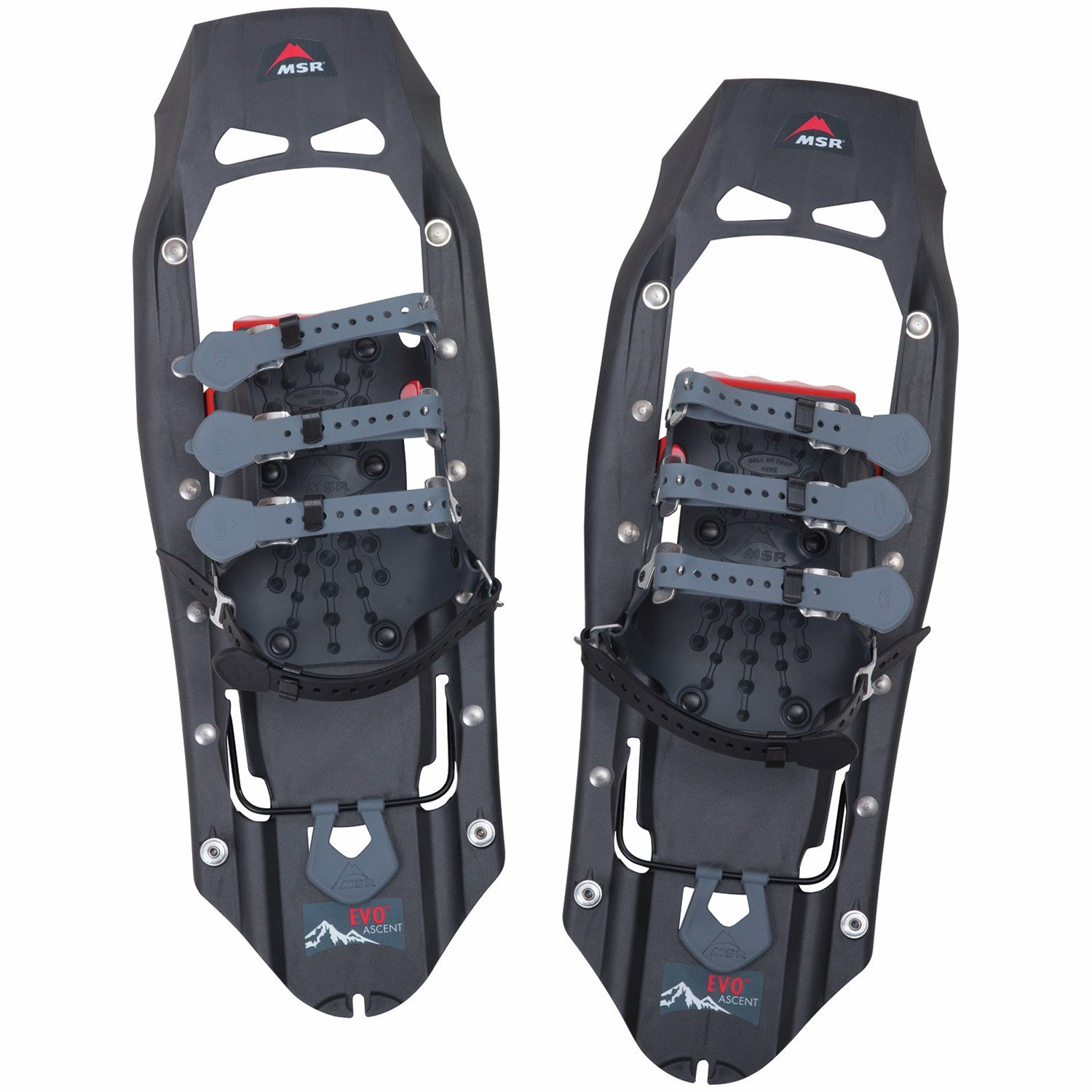Denali Equipment List
CLICK HERE for simple printable PDF version
*It is recommended to create zipper pulls on all your zippers to make it easier to use with gloves and mittens on.
i
Head
Beanie/Toque
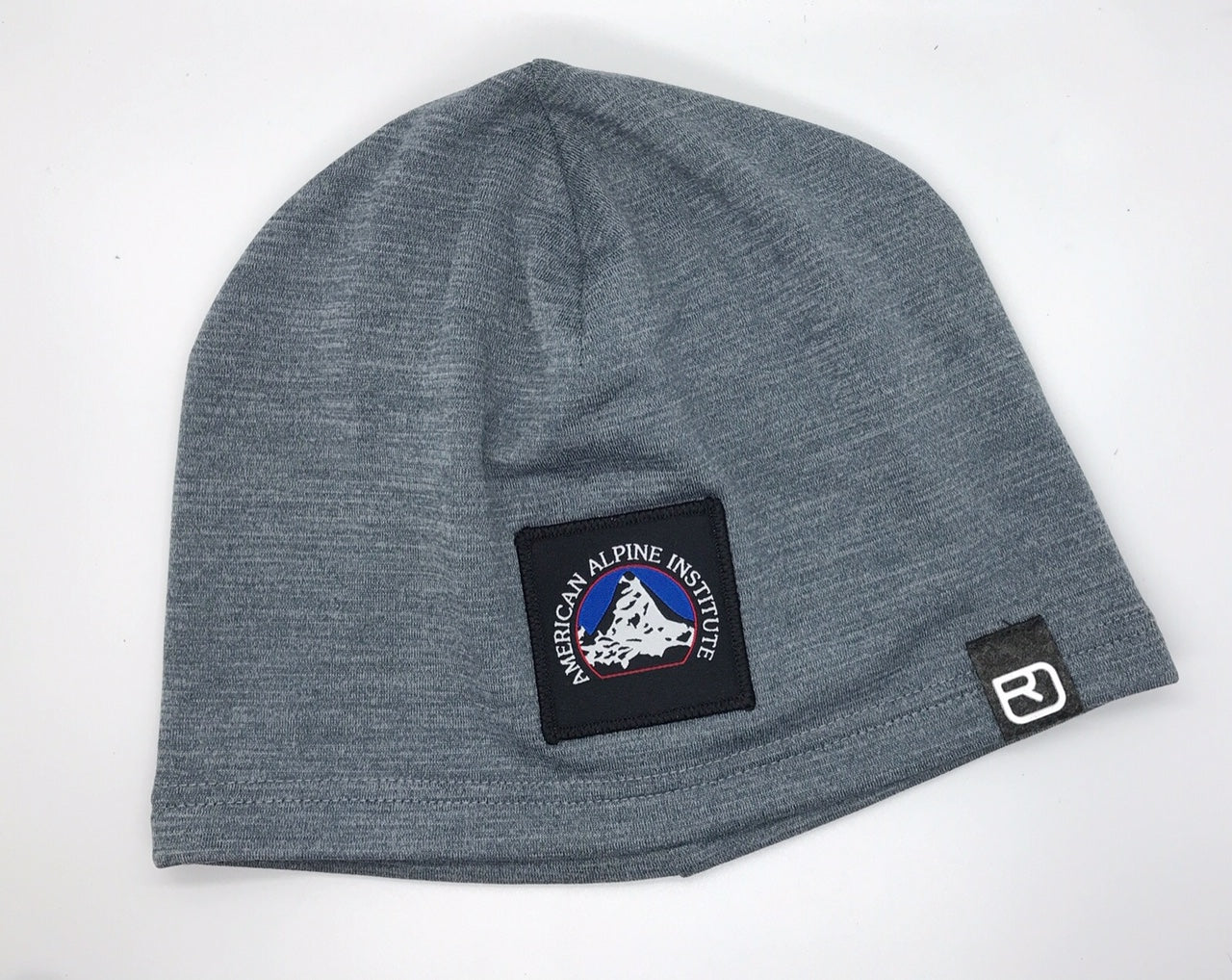
Wool or synthetic material. Windstopper, or windproof material makes hearing difficult. This hat will primarily be used while sitting around camp or in very cold and windy conditions. We lose a lot of heat through our head, so it is always important to cover the head when trying to retain warmth.
Examples
-->  Ortovox Fleece Light Beanie
Ortovox Fleece Light Beanie
i
i
i
i
Sun Hat
 Must have a hat or visor with a brim on it to keep the sun out of the face. You will be wearing this under the helmet so make sure it is a comfortable fit. Synthetic sweat wicking material is preferred.
Must have a hat or visor with a brim on it to keep the sun out of the face. You will be wearing this under the helmet so make sure it is a comfortable fit. Synthetic sweat wicking material is preferred.Examples
i
i
i
Glacier Glasses
 You CANNOT go on the expedition without legit eye protection. They are that important. Without adequate eyewear, the eyes can literally get sunburnt and in an extreme situation will give you temporary blindness. Choose a model with 100% UV protection and side shields. Light will be coming at you from all sides, so make sure the glasses and side shields cover your eyes from the top, side, and bottom. Look for lenses that have around 12% or less visible light transmission (VLT), in order to properly protect your eyes. Visible Light Transmission is a measurement of how many visible light waves transmit through a material. We recommend purchasing a cheap "back up pair" to bring with you. You spend a substantial time on the mountain and it is important to have a back up in case something happens to your initial pair.
You CANNOT go on the expedition without legit eye protection. They are that important. Without adequate eyewear, the eyes can literally get sunburnt and in an extreme situation will give you temporary blindness. Choose a model with 100% UV protection and side shields. Light will be coming at you from all sides, so make sure the glasses and side shields cover your eyes from the top, side, and bottom. Look for lenses that have around 12% or less visible light transmission (VLT), in order to properly protect your eyes. Visible Light Transmission is a measurement of how many visible light waves transmit through a material. We recommend purchasing a cheap "back up pair" to bring with you. You spend a substantial time on the mountain and it is important to have a back up in case something happens to your initial pair.
NOTE: Those using contact lenses should also bring a pair of prescription glasses in the event that your contacts or solutions are lost or damaged by freezing.
i*Prescription Glasses - If you have prescription glasses then you have a couple of options: One is to go to www.sportrx.com, where they have some options to purchase glacier glasses with prescription lenses. Or you can check out the website www.cocoonseyewear.com and purchase Over-The-Glass (OTG) glasses to go over your prescription glasses. If you go this route make sure and purchase the pair with the least amount of visible light transmission (VLT).
*Contact Lens Care Precautions: In our experience, contact lenses are perfectly acceptable for climbing trips at altitude and in very cold conditions. If you plan on wearing contact lenses on Denali, you should be familiar with the intricacies of long-term maintenance and care in these conditions. Plan on bringing at least two spare pairs of lenses and a few small bottles of whatever solutions you will require. Bring a pair of glasses as a backup or to give your eyes a rest.
**Lighter colored eyes tend to be more sensitive to sunlight. We recommend if you have light colored eyes that you err on the lenses that have the smallest percentage of visible light transmission.
Examples
Medium to large size faces
Acceptable Lenses : Spectron 4, Spectron 3, REACTIV 2-4, REACTIV 2-3
Acceptable Lenses : Spectron 4, Spectron 3, REACTIV 2-4, REACTIV 2-3
Acceptable Lenses : Spectron 4, Spectron 3, REACTIV 2-4, REACTIV 2-3
Acceptable Lenses : Cat 4, Cat 3, Cat 2-4, Cat 1-3, Cat 2-3
Smaller sized faces
Acceptable Lenses : Spectron 4, Spectron 3, REACTIV 2-4, REACTIV 2-3
Acceptable Lenses : Spectron 4, Spectron 3, REACTIV 2-4, REACTIV 2-3
Cheaper option, also good for a back-up pair
i
Goggles
 This is a very important pice of gear to protect you from high winds or heavy precipitation. They should be 100% UV rated lenses. Bring either a photochromic lens (a lens that gets lighter or darker depending on conditions) , or a double lens set up with one darker lens and one lighter lens that you can change out depending on conditions. For example, if your stock lens is very dark, then have a secondary lens that is lighter, and vice versa. The reason for this is to be prepared for a spectrum of conditions. For the most part goggles tend to be used in low light (windy) conditions, where we still need the UV light protection, but we want a lighter colored lens so we can see better in those conditions. On the other end of that is if it is sunny and windy (at altitude the wind chill can be extremely cold, so in those conditions you want every inch of skin protected, and that is where the goggles come in, they help protect a large part of the face) in which case we want a darker colored lens to protect the eyes.
This is a very important pice of gear to protect you from high winds or heavy precipitation. They should be 100% UV rated lenses. Bring either a photochromic lens (a lens that gets lighter or darker depending on conditions) , or a double lens set up with one darker lens and one lighter lens that you can change out depending on conditions. For example, if your stock lens is very dark, then have a secondary lens that is lighter, and vice versa. The reason for this is to be prepared for a spectrum of conditions. For the most part goggles tend to be used in low light (windy) conditions, where we still need the UV light protection, but we want a lighter colored lens so we can see better in those conditions. On the other end of that is if it is sunny and windy (at altitude the wind chill can be extremely cold, so in those conditions you want every inch of skin protected, and that is where the goggles come in, they help protect a large part of the face) in which case we want a darker colored lens to protect the eyes.
**If you do bring two lenses please be proficient at changing them out with gloves on before heading onto the mountain. Definitely practice here as it is an important skill to have when conditions quickly change out there. If you lose one of your lenses while trying to change them out that could end your expedition right there. The Julbo superflow system is arguably the best system out there right now when it comes to mitigating google fog up. The use of that system is a bit finicky at first, especially with gloves on. This is also something that you will want to practice and get good at using before you head onto the mountain.
**If you use prescription glasses make sure and purchase an OTG (Over-The-Glass) version of the goggles so they fit over your prescription glasses. Or you can visit www.sportrx.com and safetygearpro.com to get prescription lenses for your goggles.
Examples
Medium to large sized faces
Acceptable Lenses : REACTIV High Mountain 2-4, REACTIV Performance 2-4
Acceptable Lenses : Sun Black Gold Mirror, Sun Platinum Mirror, Sun Black, Sun Green Mirror
Acceptable Lenses : Sun Black Gold Mirror, Sun Platinum Mirror, Sun Black, Sun Green Mirror
Acceptable Lenses : Sun Black Gold Mirror, Sun Platinum Mirror, Sun Black, Sun Green Mirror
Smaller sized faces
Acceptable Lenses : Sun Black Gold Mirror, Sun Platinum Mirror, Sun Black, Sun Green Mirror
Acceptable Lenses : Sun Black Gold Mirror, Sun Platinum Mirror, Sun Black, Sun Green Mirror
Cheaper options
Acceptable Lenses : Sun Black Gold Mirror, Sun Platinum Mirror, Sun Black, Sun Green Mirror
OTG options
Acceptable Lenses : Spectron 3
 --> SMITH Women's Showcase OTG
--> SMITH Women's Showcase OTG
Acceptable Lenses : Sun Black Gold Mirror, Sun Platinum Mirror, Sun Black, Sun Green Mirror
Nose Protection
 Designed to protect your nose from intense sunlight, this is a UPF rated cloth nose guard that fits onto your glacier glasses. Try the fit on your sunglasses; they should fit well without pushing the frames off your nose. Trim as needed.
Designed to protect your nose from intense sunlight, this is a UPF rated cloth nose guard that fits onto your glacier glasses. Try the fit on your sunglasses; they should fit well without pushing the frames off your nose. Trim as needed.Examples
i
i
Neck Gaiter
Examples
i
i
i
i
i
i
ii
Half Face Mask/Balaclava
 **PLEASE CHECK IN WITH YOUR GUIDE ON THIS PIECE OF EQUIPMENT AND SEE WHAT THEY PREFER YOU TO BRING. This category of item is a vital part for protecting skin on the head during cold and windy conditions. Guides will usually want to be sent a picture of you wearing your full headgear (bavaclava/half face mask, goggles, beanie/hoods) on to ensure no skin is visible.
**PLEASE CHECK IN WITH YOUR GUIDE ON THIS PIECE OF EQUIPMENT AND SEE WHAT THEY PREFER YOU TO BRING. This category of item is a vital part for protecting skin on the head during cold and windy conditions. Guides will usually want to be sent a picture of you wearing your full headgear (bavaclava/half face mask, goggles, beanie/hoods) on to ensure no skin is visible.
Examples
 --> Zan Headgear Neoprene Half Face Mask
--> Zan Headgear Neoprene Half Face Mask
 --> Outdoor Research Ninjaclava
--> Outdoor Research Ninjaclava
 --> Buff Thermonet Hinged Balaclava
--> Buff Thermonet Hinged Balaclava
Hands
CLICK HERE for more info on Alpine Glove Systems
Liner Gloves

Examples
 --> Men's Outdoor Research Vigor Gloves
--> Men's Outdoor Research Vigor Gloves
 --> Women's Outdoor Research Vigor Gloves
--> Women's Outdoor Research Vigor Gloves
 --> Men's Black Diamond Lightweight Screentap Gloves
--> Men's Black Diamond Lightweight Screentap Gloves
 --> Women's Black Diamond Lightweight Screentap Gloves
--> Women's Black Diamond Lightweight Screentap Gloves
i
i
Mid-weight Soft-shell Gloves
 This glove needs to have a durable palm, some insulation value, dexterity, and be made out of soft-shell or breathable material. Waterproof or Windstopper material is also okay. Bring 1 pair.
This glove needs to have a durable palm, some insulation value, dexterity, and be made out of soft-shell or breathable material. Waterproof or Windstopper material is also okay. Bring 1 pair.Examples
 --> Outdoor Research Extravert Gloves
--> Outdoor Research Extravert Gloves
 --> Men's Mountain Equipment Super Alpine Glove
--> Men's Mountain Equipment Super Alpine Glove
 --> Women's Mountain Equipment Super Alpine Glove
--> Women's Mountain Equipment Super Alpine Glove
Insulated Waterproof Glove (Optional)
 This glove is optional to bring but can be very useful in certain situations. A generic ski glove will work for this category. This is a nice middle ground in functionality between the mid-weight soft-shell gloves and the expedition weight gloves. A prominent area of use for this glove is on the fixed lines, where you have to unclip and clip back on your lanyards as you pass a piece of protection. There will be times where your mid-weight soft-shell glove will be too cold and your expedition weight gloves can lack just enough dexterity to make going up the fixed lines less efficient. That is where this category of glove will shine. They can also work as a dry pair of gloves to be able to switch into if another pair gets wet.
This glove is optional to bring but can be very useful in certain situations. A generic ski glove will work for this category. This is a nice middle ground in functionality between the mid-weight soft-shell gloves and the expedition weight gloves. A prominent area of use for this glove is on the fixed lines, where you have to unclip and clip back on your lanyards as you pass a piece of protection. There will be times where your mid-weight soft-shell glove will be too cold and your expedition weight gloves can lack just enough dexterity to make going up the fixed lines less efficient. That is where this category of glove will shine. They can also work as a dry pair of gloves to be able to switch into if another pair gets wet.
Examples
 --> Black Diamond Renegade Glove
--> Black Diamond Renegade Glove
 --> Black Diamond Patrol Glove
--> Black Diamond Patrol Glove
.
Expedition Weight Fingered Gloves
 Composed of heavy-duty waterproof shells with a mid-weight liner, these modular gloves MUST have removable liners or be sized to fit a liner glove inside. Should be dexterous enough to handle ropes, carabiners, and ascenders. Gauntlets should extend to mid-forearm. Very important to size these kind of loosely, we don't want any compression of the hand as to restrict blood-flow and compress the insulation to make it less effective.
Composed of heavy-duty waterproof shells with a mid-weight liner, these modular gloves MUST have removable liners or be sized to fit a liner glove inside. Should be dexterous enough to handle ropes, carabiners, and ascenders. Gauntlets should extend to mid-forearm. Very important to size these kind of loosely, we don't want any compression of the hand as to restrict blood-flow and compress the insulation to make it less effective. Examples
**The Black Diamond Guide Gloves have some heavy duty leather on them, this causes them to be kind of stiff when they are new. If you get this glove, please wear them a lot and break them in BEFORE you head to Alaska. This will soften up the leather and make tying knots, manipulating carabiners, and other tasks more efficient.
 --> Men's Black Diamond Guide Glove
--> Men's Black Diamond Guide Glove
 --> Women's Black Diamond Guide Glove
--> Women's Black Diamond Guide Glove
i
Expedition Weight Mittens
 The first and often last defense against frostbite. Expedition weight, extremely warm, thick, and modular mittens should be down or synthetic with a waterproof shell. Gauntlets should extend to mid-forearm. Large enough to allow for liner gloves to be worn underneath. i
The first and often last defense against frostbite. Expedition weight, extremely warm, thick, and modular mittens should be down or synthetic with a waterproof shell. Gauntlets should extend to mid-forearm. Large enough to allow for liner gloves to be worn underneath. i
Examples
 --> Men's Outdoor Research Alti II Mitts
--> Men's Outdoor Research Alti II Mitts
 --> Women's Outdoor Research Alti II Mitts
--> Women's Outdoor Research Alti II Mitts
 --> Black Diamond Absolute Mitts
--> Black Diamond Absolute Mitts
 --> Mountain Hardwear Absolute Zero Mitts
--> Mountain Hardwear Absolute Zero Mitts
i
i
i
i
Torso
CLICK HERE for more info on The Layering System
Sports Bra
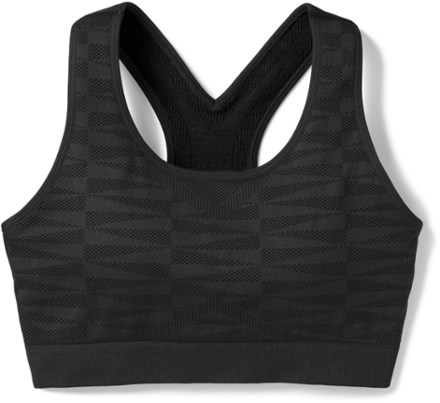 Comfortable, activewear. Choose a model without plastic strap adjustments. These can dig into your shoulders while wearing a pack and can lead to injury. Look for a strap that lays flat and smooth against your skin. Bring 2 - one to change into if the other gets wet. Materials: wool or synthetic.
Comfortable, activewear. Choose a model without plastic strap adjustments. These can dig into your shoulders while wearing a pack and can lead to injury. Look for a strap that lays flat and smooth against your skin. Bring 2 - one to change into if the other gets wet. Materials: wool or synthetic.Examples
 --> Smartwool Merino Seamless Racerback Bra
--> Smartwool Merino Seamless Racerback Bra
 --> Icebreaker Merino Sprite Racerback Bra
--> Icebreaker Merino Sprite Racerback Bra
i
i
i
i
Wool or Synthetic T-Shirt (Optional)
 Bringing a t-shirt can add some nice versatility to the expedition. Since morale is an important player when it comes to expedition success, having versatility when it comes to comfort, can play a big role. Where this piece excels is when you are inside the tent when conditions are warm. We don't really need the sun protection if we are inside the tent and we all know tents can get very hot inside when it is sunny. So having the ability to wear a t-shirt in those scenarios will be a little more comfortable than a long sleeve. You can also wear the t-shirt under a long sleeve base layer on the upper mountain to add more warmth. No cotton.
Bringing a t-shirt can add some nice versatility to the expedition. Since morale is an important player when it comes to expedition success, having versatility when it comes to comfort, can play a big role. Where this piece excels is when you are inside the tent when conditions are warm. We don't really need the sun protection if we are inside the tent and we all know tents can get very hot inside when it is sunny. So having the ability to wear a t-shirt in those scenarios will be a little more comfortable than a long sleeve. You can also wear the t-shirt under a long sleeve base layer on the upper mountain to add more warmth. No cotton.
Examples
 --> Men's Patagonia Capilene Cool Lightweight Shirt
--> Men's Patagonia Capilene Cool Lightweight Shirt
 --> Women's Patagonia Capilene Cool Lightweight Shirt
--> Women's Patagonia Capilene Cool Lightweight Shirt
 --> Men's Arc'teryx Cormac Crew SS Shirt
--> Men's Arc'teryx Cormac Crew SS Shirt
 --> Women's Arc'teryx Taema Crew Neck Shirt SS Shirt
--> Women's Arc'teryx Taema Crew Neck Shirt SS Shirt
Moisture Management Base Layer Top (Sun Hoody)

Examples
 --> Men's Patagonia Capilene Cool Daily Hoody
--> Men's Patagonia Capilene Cool Daily Hoody
 --> Women's Patagonia Capilene Cool Daily Hoody
--> Women's Patagonia Capilene Cool Daily Hoody
 --> Women's Arc'teryx Taema Hoody
--> Women's Arc'teryx Taema Hoody
 --> Men's Arc'teryx Cormac Hoody
--> Men's Arc'teryx Cormac Hoody
Thermal Base Layer Top (Optional)
 Can be nice to have with you, if you run cold, on the upper mountain where temps will be colder. If you don't run cold then this layer isn't necessary to bring. If your layering system trends to be on the lighter side of things, then you might also consider bringing a thermal base layer top.
Can be nice to have with you, if you run cold, on the upper mountain where temps will be colder. If you don't run cold then this layer isn't necessary to bring. If your layering system trends to be on the lighter side of things, then you might also consider bringing a thermal base layer top.
Examples
 --> Men's Arc'teryx Motus AR Crew LS
--> Men's Arc'teryx Motus AR Crew LS
 --> Women's Arc'teryx Motus AR Crew
--> Women's Arc'teryx Motus AR Crew
Warmer options
 --> Men's Patagonia Capilene Air Crew
--> Men's Patagonia Capilene Air Crew
 --> Women's Patagonia Capilene Air Crew
--> Women's Patagonia Capilene Air Crew
i
i
i
Active Insulation Jacket (Midlayer Jacket)
 This versatile piece is typically worn when it's cold and you are on the move, or you only need a small amount of added insulation when not moving in warmer conditions. Since we generate a lot of heat while moving (especially uphill), the key features of this piece should be lightweight and breathable. Conversely, because this piece is lightweight and breathable, it does not work as a good insulation piece in colder conditions when stationary.
This versatile piece is typically worn when it's cold and you are on the move, or you only need a small amount of added insulation when not moving in warmer conditions. Since we generate a lot of heat while moving (especially uphill), the key features of this piece should be lightweight and breathable. Conversely, because this piece is lightweight and breathable, it does not work as a good insulation piece in colder conditions when stationary.
Examples
Fleece
 --> Men's Patagonia R1 Full-Zip Hoody
--> Men's Patagonia R1 Full-Zip Hoody
 --> Women's Patagonia R1 Full-Zip Hoody
--> Women's Patagonia R1 Full-Zip Hoody
 --> Women's Mountain Equipment Lumiko Hooded Jacket
--> Women's Mountain Equipment Lumiko Hooded Jacket
 --> Men's Mountain Equipment Lumiko Hooded Jacket
--> Men's Mountain Equipment Lumiko Hooded Jacket
40g/m2
 --> Men's Montbell U.L. Thermawrap Parka
--> Men's Montbell U.L. Thermawrap Parka
 --> Women's Montbell U.L. Thermawrap Parka
--> Women's Montbell U.L. Thermawrap Parka
 --> Men's Arc'teryx Proton Lightweight Hoody
--> Men's Arc'teryx Proton Lightweight Hoody
60g/m2
 --> Men's Patagonia Nano Air Hoody
--> Men's Patagonia Nano Air Hoody
 --> Women's Patagonia Nano Air Hoody
--> Women's Patagonia Nano Air Hoody
 --> Men's Arc'teryx Proton LT Hoody
--> Men's Arc'teryx Proton LT Hoody
 --> Women's Arc'teryx Proton Hoody
--> Women's Arc'teryx Proton Hoody
i
Soft-shell or Windproof Jacket

Examples
Thin, light, windproof jackets
 --> Men's Patagonia Houdini Jacket
--> Men's Patagonia Houdini Jacket
 --> Women's Patagonia Houdini Jacket
--> Women's Patagonia Houdini Jacket
 --> Men's Arc'teryx Squamish Hoody
--> Men's Arc'teryx Squamish Hoody
 --> Women's Arc'teryx Squamish Hoody
--> Women's Arc'teryx Squamish Hoody
Breathable, wind resistant jackets
 --> Men's Patagonia Houdini Air Jacket
--> Men's Patagonia Houdini Air Jacket
 --> Women's Patagonia Houdini Air Jacket
--> Women's Patagonia Houdini Air Jacket
 --> Women's Rab Borealis Jacket
--> Women's Rab Borealis Jacket
Passive Insulation Jacket

The goal for this piece is to add warmth to an internal layering system. Depending on clothing system/environmental conditions, may be worn underneath or over top of your shell jacket. The weight and design of this piece will vary based on the other items of climbing that you are bringing. Generally, jackets with 60g - 100g of synthetic sheet insulation are adequate. For Down, look for a fill weight of 100g-150g of 700 or higher fill power. If your general layers seem on the lighter side, or you run cold then go for a heavier weight for this piece.
Examples
Down
 --> Men's Rab Microlight Alpine Jacket
--> Men's Rab Microlight Alpine Jacket
 --> Women's Rab Microlight Alpine Jacket
--> Women's Rab Microlight Alpine Jacket
 --> Men's Patagonia Down Sweater Hoody
--> Men's Patagonia Down Sweater Hoody
 --> Women's Patagonia Down Sweater Hoody
--> Women's Patagonia Down Sweater Hoody
Warmer Down Options
 --> Men's Rab Electron Pro Jacket
--> Men's Rab Electron Pro Jacket
 --> Women's Rab Electron Pro Jacket
--> Women's Rab Electron Pro Jacket
 --> Men's Arc'teryx Thorium Hoody
--> Men's Arc'teryx Thorium Hoody
 --> Women's Arc'teryx Thorium Hoody
--> Women's Arc'teryx Thorium Hoody
60g/m2
 --> Men's Patagonia DAS Light Hoody
--> Men's Patagonia DAS Light Hoody
 --> Women's Patagonia DAS Light Hoody
--> Women's Patagonia DAS Light Hoody
 --> Men's Arc'teryx Atom LT Hoody
--> Men's Arc'teryx Atom LT Hoody
 --> Women's Arc'teryx Atom LT Hoody
--> Women's Arc'teryx Atom LT Hoody
Warmer synthetic options
 --> Men's Arc'teryx Atom AR Hoody
--> Men's Arc'teryx Atom AR Hoody
 --> Women's Arc'teryx Atom Heavyweight Hoody
--> Women's Arc'teryx Atom Heavyweight Hoody
i
Waterproof (Hard-shell) Jacket
 The Hard-shell is defined as a waterproof piece. This layer gives protection against precipitation and high winds. This jacket should be non-insulated and have a helmet compatible hood. When sizing this piece, make sure you can fit your passive insulation jacket underneath. Make sure to choose a jacket with 3-layer construction. These will offer the best protection against precipitation and wind, and be more durable than 2 layer, or 2.5 layer jackets to put up with the rigors of an expedition. The waterproof rating is based on pressure, and the lesser constructed jackets will let water through from simple things like sitting or the pressure of backpack straps when carrying your pack. Gore-tex Pro offers the best protection currently, and will last you longer. Also keep in mind what type of waterproof jacket will set you up best in the long run.
The Hard-shell is defined as a waterproof piece. This layer gives protection against precipitation and high winds. This jacket should be non-insulated and have a helmet compatible hood. When sizing this piece, make sure you can fit your passive insulation jacket underneath. Make sure to choose a jacket with 3-layer construction. These will offer the best protection against precipitation and wind, and be more durable than 2 layer, or 2.5 layer jackets to put up with the rigors of an expedition. The waterproof rating is based on pressure, and the lesser constructed jackets will let water through from simple things like sitting or the pressure of backpack straps when carrying your pack. Gore-tex Pro offers the best protection currently, and will last you longer. Also keep in mind what type of waterproof jacket will set you up best in the long run.
Examples
 --> Men's Patagonia Storm10 Jacket
--> Men's Patagonia Storm10 Jacket
 --> Women's Patagonia Storm10 Jacket
--> Women's Patagonia Storm10 Jacket
 --> Women's Arc'teryx Alpha AR
--> Women's Arc'teryx Alpha AR
Budget option
 --> Men's Patagonia Torrentshell 3L Jacket
--> Men's Patagonia Torrentshell 3L Jacket
 --> Women's Patagonia Torrentshell 3L Jacket
--> Women's Patagonia Torrentshell 3L Jacket
i
i
Expedition Parka - CLICK HERE to Rent Me!
 These jackets come in many shapes, sizes and temperature ratings. If you tend to get cold easily, opt for a slightly warmer and more substantial parka. The construction needs to be full box-wall or offset baffle construction. Stitch through is not accepted because they are not as warm. It also must have a hood and sufficient coverage below the waist. This piece needs to be sized bigger to fit over your other layers.
These jackets come in many shapes, sizes and temperature ratings. If you tend to get cold easily, opt for a slightly warmer and more substantial parka. The construction needs to be full box-wall or offset baffle construction. Stitch through is not accepted because they are not as warm. It also must have a hood and sufficient coverage below the waist. This piece needs to be sized bigger to fit over your other layers.
Weight: 28 - 55oz / 708 – 1560 grams
Fill Materials: Down
**Fill Weight: Look for at least 300g of 800 fill Down for a men's size L. 270g for a women's size 12.
**If the jacket is using anything less than 800 fill Down, make sure there is substantially more fill weight in the jacket. The Mountain Equipment K7 jacket is really the lightest weight jacket that you want to get for this piece. If the rest of your layering system is on the warmer side or you know you run hot, then this jacket can be a good option. If you run cold or the rest of your layering system is on the colder side, then definitely get a warmer option for this piece.
**8000M Parkas are okay. If you plan on needing an 8000M rated parka for future endeavors then go for one. Otherwise they are overkill for Denali, as well as more expensive, heavier, and bulkier.
Examples
 --> Men's Mountain Equipment K7 Jacket
--> Men's Mountain Equipment K7 Jacket
 --> Women's Mountain Equipment K7 Jacket
--> Women's Mountain Equipment K7 Jacket
 --> Feathered Friends Khumbu Down Parka
--> Feathered Friends Khumbu Down Parka
8000M Parkas
 --> Rab Expedition 8000 Jacket
--> Rab Expedition 8000 Jacket
 --> Feathered Friends Rock & Ice Down Parka
--> Feathered Friends Rock & Ice Down Parka
i
i
Compression Stuff Sack for Expedition Parka
 Used to compress down the parka to it's smallest possible size.
Used to compress down the parka to it's smallest possible size.
Examples
 --> Sea to Summit Ultra-Sil Compression Dry Sack i*Usually size Small or Medium will cover you on this.
--> Sea to Summit Ultra-Sil Compression Dry Sack i*Usually size Small or Medium will cover you on this.
i
i
i
i
i
i
i
Lower Body
Undergarments

 Bring 1-3 pairs depending on personal preference for changing. Synthetic or wool only.
Bring 1-3 pairs depending on personal preference for changing. Synthetic or wool only.
Examples
 --> Women's Patagonia Barely Hipster
--> Women's Patagonia Barely Hipster
 --> Men's Patagonia Sender Boxer Brief
--> Men's Patagonia Sender Boxer Brief
 --> Women's Icebreaker Merino Siren Thong
--> Women's Icebreaker Merino Siren Thong
 --> Men's SAXX Quest Boxer Briefs
--> Men's SAXX Quest Boxer Briefs
i
i
iBase Layer Pant
 Light to mid-weight bottoms made from wool or synthetic material. No cotton.
Light to mid-weight bottoms made from wool or synthetic material. No cotton.
Examples
 --> Men's Patagonia Capilene Midweight Bottoms
--> Men's Patagonia Capilene Midweight Bottoms
 --> Women's Patagonia Capilene Midweight Bottoms
--> Women's Patagonia Capilene Midweight Bottoms
 --> Men's Smartwool Merino 150 Baselayer Bottom
--> Men's Smartwool Merino 150 Baselayer Bottom
 --> Women's Smartwool Merino 150 Baselayer Bottom
--> Women's Smartwool Merino 150 Baselayer Bottom
i
i
i
i
i
i
Expedition Weight Base Layer Pant
 A thicker pair of long underwear bottoms that will serve as an additional insulating layer for use in colder temperatures. Windproof/Windstopper pants are heavier and less functional and will not work for this layer.
A thicker pair of long underwear bottoms that will serve as an additional insulating layer for use in colder temperatures. Windproof/Windstopper pants are heavier and less functional and will not work for this layer.
Examples
 --> Women's Patagonia Capilene Air Bottoms
--> Women's Patagonia Capilene Air Bottoms
 --> Men's Patagonia Capilene Air Bottoms
--> Men's Patagonia Capilene Air Bottoms
 --> Women's Arc'teryx Rho Heavyweight Bottoms
--> Women's Arc'teryx Rho Heavyweight Bottoms
 --> Men's Arc'teryx Rho Heavyweight Bottoms
--> Men's Arc'teryx Rho Heavyweight Bottoms
 --> Women's Rab Power Stretch Pro Pant
--> Women's Rab Power Stretch Pro Pant
 --> Men's Rab Power Stretch Pro Pant
--> Men's Rab Power Stretch Pro Pant
i
i
i
i
Soft-shell Pants
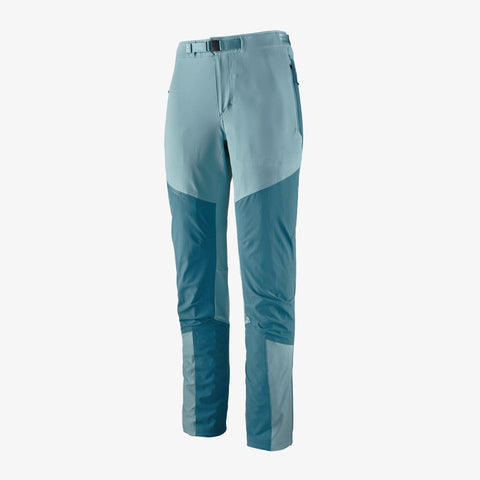 This is your action layer. Should be stretchy, breathable and wind/snow-resistant. They should not restrict movement. A thigh pocket is a useful feature for storing small items. Make sure you are able to fit a base layer pant underneath these if you plan on bringing a base layer pant.
This is your action layer. Should be stretchy, breathable and wind/snow-resistant. They should not restrict movement. A thigh pocket is a useful feature for storing small items. Make sure you are able to fit a base layer pant underneath these if you plan on bringing a base layer pant.
Examples
 --> Women's Patagonia Altvia Alpine Pants
--> Women's Patagonia Altvia Alpine Pants
 --> Men's Patagonia Altvia Alpine Pants
--> Men's Patagonia Altvia Alpine Pants
 --> Men's Arc'teryx Gamma Pant
--> Men's Arc'teryx Gamma Pant
 --> Women's Arc'teryx Gamma LT Pant
--> Women's Arc'teryx Gamma LT Pant
 --> Women's Rab Ascendor AS Climbing Pant
--> Women's Rab Ascendor AS Climbing Pant
 --> Men's Rab Ascendor AS Climbing Pant
--> Men's Rab Ascendor AS Climbing Pant
i
i
Waterproof (Hard-shell) Pants
 Need to be uninsulated and full side zips are mandatory. These do not have to be 3 layer construction, 2.5 layer works too. Make sure when sizing that these can fit over your soft shell pants.
Need to be uninsulated and full side zips are mandatory. These do not have to be 3 layer construction, 2.5 layer works too. Make sure when sizing that these can fit over your soft shell pants.
Examples
 --> Men's Rab Downpour Plus 2.0 Waterproof Pants
--> Men's Rab Downpour Plus 2.0 Waterproof Pants
 --> Women's Rab Downpour Plus 2.0 Waterproof Pants *Short inseam available
--> Women's Rab Downpour Plus 2.0 Waterproof Pants *Short inseam available
 --> Men's Marmot PreCip Eco Full Zip Pants
--> Men's Marmot PreCip Eco Full Zip Pants
 --> Women's Marmot PreCip Eco Full Zip Pants *Short inseam available
--> Women's Marmot PreCip Eco Full Zip Pants *Short inseam available
i
i
i
Insulated Pants
 Full-length side-zips are a critical feature. Down or synthetic fill. Reinforced seat and knees recommended. For synthetic fill, look for 80g to 100g weight of insulation. For down fill, anywhere from 100g and up is fine for amount of down in the pants. If you run cold then stay on the warmer side of the spectrum. 8000M rated puffy pants are okay, but again overkill for Denali. Only bring 8000M rated pants if you are planning the Seven Summits or actively pursuing the Seven Summits. Synthetic pants will be more durable, down pants will be lighter and more packable.
Full-length side-zips are a critical feature. Down or synthetic fill. Reinforced seat and knees recommended. For synthetic fill, look for 80g to 100g weight of insulation. For down fill, anywhere from 100g and up is fine for amount of down in the pants. If you run cold then stay on the warmer side of the spectrum. 8000M rated puffy pants are okay, but again overkill for Denali. Only bring 8000M rated pants if you are planning the Seven Summits or actively pursuing the Seven Summits. Synthetic pants will be more durable, down pants will be lighter and more packable.
Examples
Synthetic
 --> Rab Photon Pants *100g/m2 Insulation
--> Rab Photon Pants *100g/m2 Insulation
 --> Women's Montbell Tec Thermawrap Pants *80g/m2 Insulation
--> Women's Montbell Tec Thermawrap Pants *80g/m2 Insulation
 --> Arc'teryx Nuclei Pant *80g/m2 + 60g/m2 Insulation
--> Arc'teryx Nuclei Pant *80g/m2 + 60g/m2 Insulation
Down
 --> Feathered Friends Helios Down Pants *126g of Down
--> Feathered Friends Helios Down Pants *126g of Down
 --> Feathered Friends Volant Down Pants *158g of Down
--> Feathered Friends Volant Down Pants *158g of Down
 --> Western Mountaineering Flight Pants *115g of Down
--> Western Mountaineering Flight Pants *115g of Down
 --> Feathered Friends Frontpoint Pants *218g of Down
--> Feathered Friends Frontpoint Pants *218g of Down
8000M Examples
 --> Rab Expedition 8000 Salopettes *322g of Down
--> Rab Expedition 8000 Salopettes *322g of Down
 --> Mountain Hardwear Absolute Zero Pants
--> Mountain Hardwear Absolute Zero Pants
i
Feet
Socks

Bring three over the calf complete changes, more if you know you tend to have sweaty feet. Mid-weight socks work great here. We want to let the insulation of the boot do the work for you. A lighter weight sock will allow for a more accurate boot fit, and ample room for your feet to swell. This is important because we do not want to inhibit blood flow to the feet, the most important factor when trying to keep your feet warm. Adjust your sock system ahead of time to perfect your boot fit.
** Bring a fourth pair to change into in the tent and sleep in.
Examples
 --> Men's Darn Tough Midweight Socks
--> Men's Darn Tough Midweight Socks
 --> Women's Darn Tough Midweight Socks
--> Women's Darn Tough Midweight Socks
i-
High Altitude Mountaineering Boots

This is one of the most important items on this list, proper fit, and function with sock system is a MUST. Every company has a different fit, so ideally you area able to try on boots from many Double boots are required, designed for extended use in extreme temperatures. Modern synthetic integrated boots (those with a built-in overboot/gaiter) are highly recommended for this climb. If you have heat-moldable liners in your boots already and you have worn them for several trips, you may want to have them re-fit to ensure that the foam has not compressed and the temperature rating has been retained.
*Only go for 8000M boots if you plan on doing 8000M peaks (or Antartica) in the future. Besides that they are overkill for Denali. They can be uncomfortably hot on the lower half of the mountain. They are heavier and bulkier than 6000M boots.
Examples
Modern Synthetic Double Boots
 --> La Sportiva G2 Evo *Goes up to size US16M/17W, and down to US5M/US6W.
--> La Sportiva G2 Evo *Goes up to size US16M/17W, and down to US5M/US6W.
 --> Mammut Nordwand 6000 High *Cheaper
--> Mammut Nordwand 6000 High *Cheaper
 --> Lowa Expedition 6000 Evo RD
--> Lowa Expedition 6000 Evo RD
8000M Boots
 --> La Sportiva Olympus Mons Cube *Goes up to size US16M/17W and down to US6M/US7W
--> La Sportiva Olympus Mons Cube *Goes up to size US16M/17W and down to US6M/US7W
 --> Lowa Expedition 8000 Evo RD
--> Lowa Expedition 8000 Evo RD
Overboots

If you have an 8000M boot then these are not required. *REQUIRED for 6000M boots for May trips. **Highly recommended for June trips, especially if you tend to get cold feet. If you get hot feet then these are optional for June but still recommended.
These are your safety buffer. They will add necessary extra insulation if conditions get extremely cold. These are mainly used on summit days, but they are important to have with you for the worst-case scenario. Weather can be unpredictable, so we want to be prepared for extreme cold. Could save your toes. Please verify these fit over your boots and that your crampons stay on without fail.
Examples
 --> Forty Below Penguins Overboot
--> Forty Below Penguins Overboot
 --> Forty Below K2 Superlight Overboot
--> Forty Below K2 Superlight Overboot
 --> Forty Below Purple Haze Overboot **Recommended for folks who tend to get colder feet.
--> Forty Below Purple Haze Overboot **Recommended for folks who tend to get colder feet.
i
i
i
i
i
Camp Booties
 Comfort and morale again are an important aspect for a successful expedition. Getting out of your boots at the end of the day and slipping them into one of these is a morale booster for sure! Down or synthetic fill.
Comfort and morale again are an important aspect for a successful expedition. Getting out of your boots at the end of the day and slipping them into one of these is a morale booster for sure! Down or synthetic fill.
Examples
 --> Western Mountaineering Expedition Booties
--> Western Mountaineering Expedition Booties
 --> Feathered Friends Down Booties
--> Feathered Friends Down Booties
i
i
i
i
i
i
Mountaineering Equipment
Ice Axe - CLICK HERE to Rent Me!
 A straight shaft is recommended due to them being lighter and cheaper, and an adze is required. If you are planning on doing more advanced mountaineering then a semi-technical axe may be a good investment, reach out for questions. Use the following info as a rough guide on length. Leashes are not recommended for generic ice axe use. However, on Denali, there is a fixed line dynamic where a leash/tether can be very useful. Note that you do not want the leash to be made of static accessory cord, but rather elastic materials that will take up slack. See next item for more info.
A straight shaft is recommended due to them being lighter and cheaper, and an adze is required. If you are planning on doing more advanced mountaineering then a semi-technical axe may be a good investment, reach out for questions. Use the following info as a rough guide on length. Leashes are not recommended for generic ice axe use. However, on Denali, there is a fixed line dynamic where a leash/tether can be very useful. Note that you do not want the leash to be made of static accessory cord, but rather elastic materials that will take up slack. See next item for more info.Examples
Single Tether For Ice Axe
 This will be used on the fixed lines, in situations when you need both hands to clip past a piece of protection. Speed and efficiency on this expedition will help with preserving and recovering energy, and it is little things that can make a big difference sometimes. Note that you can also make this out of accessory cord if you would like to, but the elasticity in the tethers take up the slack and can make the process more efficient. As you move up the fixed lines you will be attached to them with two 'lobster claw' attachments. This will be made out of your single length slings and carabiners that you bring. Similar idea to via-ferrata. There are protective pieces places along the lines to anchor them to the mountain (usually pickets). Where those attach to the rope there will be a knot that you will have to pass. The process of which is to unclip one lobster claw and clip it back on the rope ahead of the knot, and then unclip the second lobster claw and also clip it back right after the knot. Now this can be done one handed, but if conditions are cold you will be in less dexterous heavier weight gloves or mitts. In this case it can be harder to do it one handed, so you will have to drop the ice axe for a moment, make the move past the knot with two hands and then pick up the ice axe again. Note that there will be many of these knot advancement moves along the fixed lines, so being efficient in the process will save alot of time in the long run.
This will be used on the fixed lines, in situations when you need both hands to clip past a piece of protection. Speed and efficiency on this expedition will help with preserving and recovering energy, and it is little things that can make a big difference sometimes. Note that you can also make this out of accessory cord if you would like to, but the elasticity in the tethers take up the slack and can make the process more efficient. As you move up the fixed lines you will be attached to them with two 'lobster claw' attachments. This will be made out of your single length slings and carabiners that you bring. Similar idea to via-ferrata. There are protective pieces places along the lines to anchor them to the mountain (usually pickets). Where those attach to the rope there will be a knot that you will have to pass. The process of which is to unclip one lobster claw and clip it back on the rope ahead of the knot, and then unclip the second lobster claw and also clip it back right after the knot. Now this can be done one handed, but if conditions are cold you will be in less dexterous heavier weight gloves or mitts. In this case it can be harder to do it one handed, so you will have to drop the ice axe for a moment, make the move past the knot with two hands and then pick up the ice axe again. Note that there will be many of these knot advancement moves along the fixed lines, so being efficient in the process will save alot of time in the long run.
Examples
 --> Black Diamond Slinger Leash
--> Black Diamond Slinger Leash
i
i
i
i
Mountaineering Harness - CLICK HERE to Rent Me!
 Must be UIAA or CE rated for climbing. This harness should be light and packable. Size it to be able to fit over several layers. Having releasable leg loops is a desired feature so you can put on and take off the harness with boots and crampons still on.
Must be UIAA or CE rated for climbing. This harness should be light and packable. Size it to be able to fit over several layers. Having releasable leg loops is a desired feature so you can put on and take off the harness with boots and crampons still on.
Examples
 --> Blue Ice Choucas Pro Harness
--> Blue Ice Choucas Pro Harness
i
i
i
i
i
Climbing Helmet - CLICK HERE to Rent Me!
Must be UIAA or CE rated for climbing. Make sure it is a good fit for your head. Being able to fit a beanie or hood of a jacket underneath the helmet can be nice.
**Note that climbing helmets are pretty fragile, once the foam of a helmet is cracked or dented it loses it's ability to absorb force to it's best ability. Expedition logistics can be pretty tough on equipment. Please take the extra steps to keep your helmet from being damaged. This includes keeping it well padded and supported while in luggage or duffels. If you are carrying it inside of a pack or on the outside, be cautious when you set your pack down.
Examples
ii
Crampons - CLICK HERE to Rent Me!
 Modern, steel, 12-point, strap-on or semi-automatic crampons are required if you are bringing overboots. Fully automatic or step-in crampons are okay if you are NOT bringing an overboot. Fully automatic crampons do not fit with overboots on since the overboot covers the toe bail. Regardless, be sure crampon, overboot, and boot combination work well together. Make sure that you get a longer linking bar if your boots are too big for the standard one. Aluminum crampons are not functional on Denali.
Modern, steel, 12-point, strap-on or semi-automatic crampons are required if you are bringing overboots. Fully automatic or step-in crampons are okay if you are NOT bringing an overboot. Fully automatic crampons do not fit with overboots on since the overboot covers the toe bail. Regardless, be sure crampon, overboot, and boot combination work well together. Make sure that you get a longer linking bar if your boots are too big for the standard one. Aluminum crampons are not functional on Denali.
Examples
Carabiners
 Bring 6x large, pear-shaped locking carabiners.
Bring 6x large, pear-shaped locking carabiners.
Bring 4x wire gate non-locking carabiners.
Must be UIAA or CE rated for climbing.
MUST be easy to manipulate with large gloves on, lightweight is preferred.
Auto locking, triple action, and magnetic lockers are not allowed. They will freeze up and malfunction.
Carabiners are considered group gear and will wind up changing hands while on the expedition. Label/tape them well if you want your exact carabiners back at the end of the trip.
Examples
Locking carabiners
 --> Black Diamond PearLock Screwgate Carabiner
--> Black Diamond PearLock Screwgate Carabiner
Non-locking wire gate carabiners
1
i
60cm/24in. Nylon Sewn Sling

We require two 60cm (24in.) “single-length” pre-sewn slings, used to attach your ascender to your harness and for other uses throughout the trip. We supply the ascender. Thinner spectra/Dyneema slings are not recommended because they are hard to remove knots from with gloves on.
Must be UIAA or CE rated for climbing.
Examples
 --> Black Diamond 18mm Nylon Runner
--> Black Diamond 18mm Nylon Runner
i
i
i
6mm Accessory Cord
 1x length of 5ft
1x length of 5ft
1x length of 12ft.
Avoid stiff cord or any cord older than 5 years. If you have a longer section of cord than what is requested then we can cut these down to proper length when you arrive in Alaska.
iExamples
 --> Sterling 6mm Accessory Cord
--> Sterling 6mm Accessory Cord
 --> Teufelberger 6mm Prusik Cord
--> Teufelberger 6mm Prusik Cord
i
i
i
i
Trekking Poles - CLICK HERE to Rent Me!
 Two are required. Need to be collapsable and three section poles are ideal. Leverlock closures are highly recommended. Twist lock closures either break or wear out easily and then there is no good way of fixing them. Even if you don’t normally use trekking poles, on this expedition in particular, they are invaluable in helping with balance while carrying heavy packs on snowshoes. Poles on the burlier side will be more durable and be more stable with a heavy load.
Two are required. Need to be collapsable and three section poles are ideal. Leverlock closures are highly recommended. Twist lock closures either break or wear out easily and then there is no good way of fixing them. Even if you don’t normally use trekking poles, on this expedition in particular, they are invaluable in helping with balance while carrying heavy packs on snowshoes. Poles on the burlier side will be more durable and be more stable with a heavy load.Examples
 --> Black Diamond Expedition 3 Poles
--> Black Diamond Expedition 3 Poles
 --> MSR Dynalock Explore Backcountry Poles
--> MSR Dynalock Explore Backcountry Poles
i
i
i
i
i
i
Snowshoes - CLICK HERE to Rent Me!
Equipped with an integral crampon and/or aggressive traction on the bottom of the snowshoes. Snowshoes can be sized smaller than is typically recommended by manufacturers since deep snow is not common on the climbing route. Large profile basic models made by Tubbs, Atlas, and Sherpa do not work well and are not recommended. Models by MSR are proven and quite durable. Many climbers rent these from AAI as they are hard to travel with. Length should not exceed 25-28 inches.
Examples
i
i
i
i
i
i
Expedition Internal Frame Pack - CLICK HERE to Rent Me!
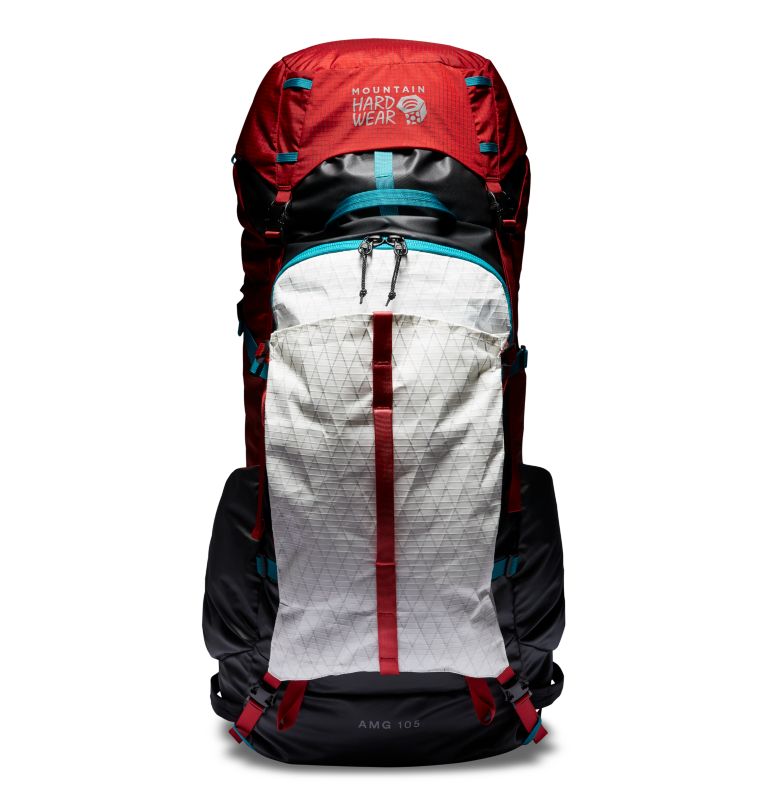
Size Range: 80-100 Liters / 4880 + cu in.
Examples
Shorter-torso option
i
Large Duffel Bag
 Your large duffel (120L-140L) should have a full-length zipper and be of durable construction for use on the mountain to transport gear in your sled. Longer, low height duffels are recommended as opposed to shorter, taller ones because they hold a lower center of gravity in the sled.
Your large duffel (120L-140L) should have a full-length zipper and be of durable construction for use on the mountain to transport gear in your sled. Longer, low height duffels are recommended as opposed to shorter, taller ones because they hold a lower center of gravity in the sled.
Examples
 --> REI Co-op Roadtripper 140 Duffel **Get this one if you can, it is the cheapest, is light, and has a really good shape for a sled.
--> REI Co-op Roadtripper 140 Duffel **Get this one if you can, it is the cheapest, is light, and has a really good shape for a sled.
 --> Mountain Tools Warrior 2 Duffel
--> Mountain Tools Warrior 2 Duffel
 -->Mountain Hardwear Expedition Duffel 140
-->Mountain Hardwear Expedition Duffel 140
i
i
Small Duffel Bag
 A second duffel (40-60L) or travel bag will be needed to store your town clothes and personal items while on the mountain. This bag will be left in a secure storage area at the glacier flight service base.
A second duffel (40-60L) or travel bag will be needed to store your town clothes and personal items while on the mountain. This bag will be left in a secure storage area at the glacier flight service base.
Examples
 --> REI Co-op Roadtripper 40 Duffel
--> REI Co-op Roadtripper 40 Duffel
 --> Mountain Hardwear Camp 4 Duffel 45
--> Mountain Hardwear Camp 4 Duffel 45
i
Camping
Sleep System
Sleeping Bag - CLICK HERE to Rent Me!
 Down only. Synthetic bags are not acceptable due to their size and weight. Rated to -40F (-40C ) or -30F (-34C) for the early and mid-May expeditions; to at least -20F (-28C) for expeditions in June. If you know you sleep cold, consider a -40F (-40C ) for early season trips and a -30F (-34C)for June trips.
Down only. Synthetic bags are not acceptable due to their size and weight. Rated to -40F (-40C ) or -30F (-34C) for the early and mid-May expeditions; to at least -20F (-28C) for expeditions in June. If you know you sleep cold, consider a -40F (-40C ) for early season trips and a -30F (-34C)for June trips.
Examples
-20F/-28C
 --> Mountain Equipment Iceline
--> Mountain Equipment Iceline
 --> Rab Expedition 1000 Sleeping Bag
--> Rab Expedition 1000 Sleeping Bag
 --> Women's Feathered Friends Plover EX -25 Sleeping Bag *Small length: 5'3" Medium length 5'9"
--> Women's Feathered Friends Plover EX -25 Sleeping Bag *Small length: 5'3" Medium length 5'9"
 --> Feathered Friends Ptarmigan EX 25 Sleeping Bag
--> Feathered Friends Ptarmigan EX 25 Sleeping Bag
-30F/-34C
 --> Western Mountaineering Cypress GWS Expedition
--> Western Mountaineering Cypress GWS Expedition
-40F/-40C
 --> Mountain Hardwear Phantom Gore-Tex -40F
--> Mountain Hardwear Phantom Gore-Tex -40F
 --> Mountain Equipment Redline
--> Mountain Equipment Redline
 --> Feathered Friends Snow Goose EX -40 Sleeping Bag
--> Feathered Friends Snow Goose EX -40 Sleeping Bag
i
i
Compression Stuff Sack for Sleeping Bag
 Used to compress down the sleeping bag to it's smallest possible size.
Used to compress down the sleeping bag to it's smallest possible size.
Examples
 --> Sea to Summit eVent Compression Dry Bag *You will want size XL for this one. At least 30L of space.
--> Sea to Summit eVent Compression Dry Bag *You will want size XL for this one. At least 30L of space.
i
i
i
i
i
i
Inflatable Sleeping Pad - CLICK HERE to Rent Me!
CLICK HERE for more info on R-Value
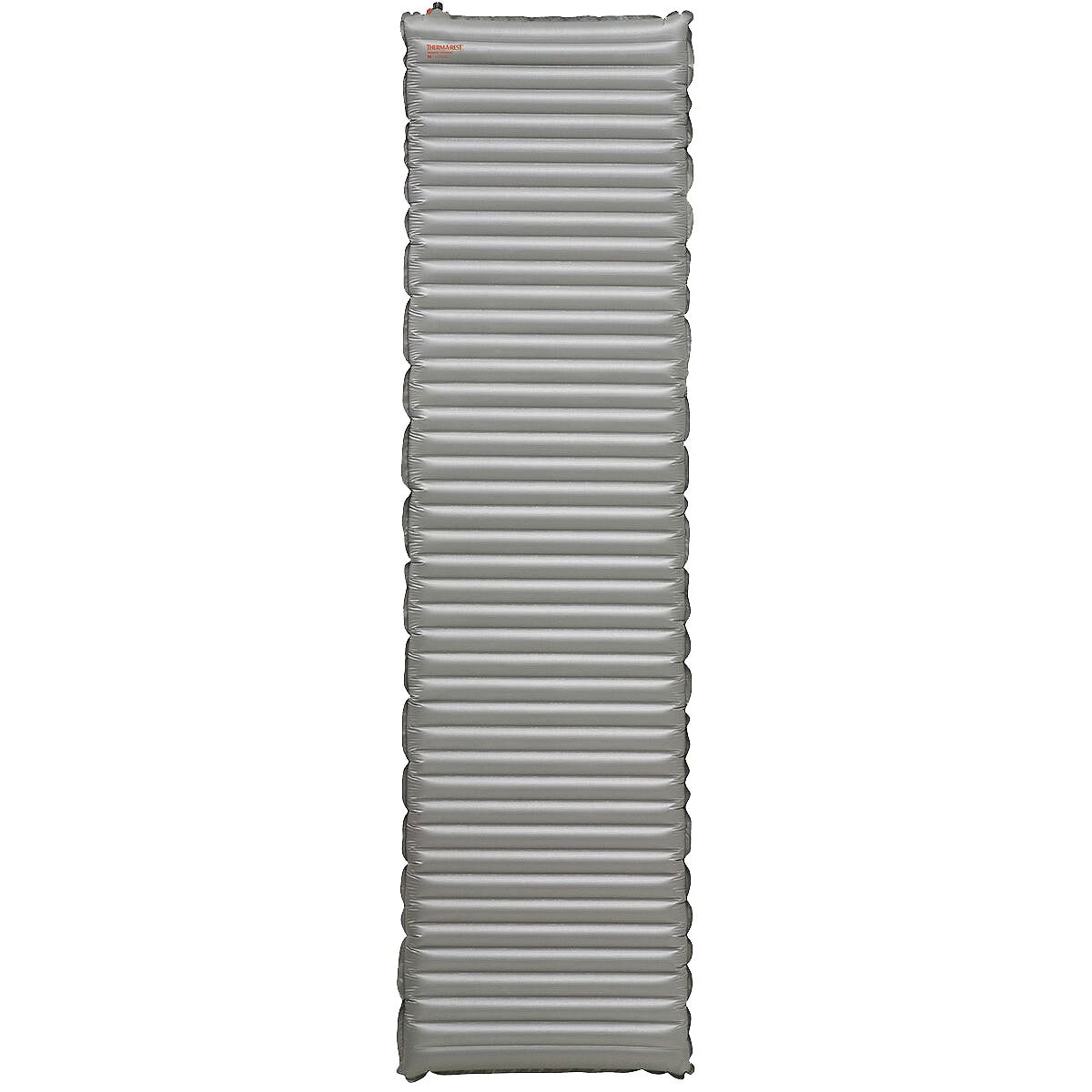 Required. Really important piece of gear here: This is the difference between a good nights sleep and a bad nights sleep. When you lay down in your bag, whether it be on your back, side, or stomach, you are compressing the down and mitigating the insulate properties immensely. That is where the sleeping pad comes in, it not only is there for comfort, but it is also pivotal to insulate that side you are sleeping on properly. Being high in the mountains and sleeping on snow can make things fairly cold, even in the summer months. A winter rated inflatable pad is recommended with an R value of at least 5 being ideal. Pads with an R value of at least 4 are acceptable. Since using bulkier sleeping bags and clothing, going with a bigger sleeping pad, like the rectangular shaped ones instead of the mummy (tapered) ones, can be nice for comfort.
Required. Really important piece of gear here: This is the difference between a good nights sleep and a bad nights sleep. When you lay down in your bag, whether it be on your back, side, or stomach, you are compressing the down and mitigating the insulate properties immensely. That is where the sleeping pad comes in, it not only is there for comfort, but it is also pivotal to insulate that side you are sleeping on properly. Being high in the mountains and sleeping on snow can make things fairly cold, even in the summer months. A winter rated inflatable pad is recommended with an R value of at least 5 being ideal. Pads with an R value of at least 4 are acceptable. Since using bulkier sleeping bags and clothing, going with a bigger sleeping pad, like the rectangular shaped ones instead of the mummy (tapered) ones, can be nice for comfort.
Examples
 --> Thermarest Neoair XTherm MAX
--> Thermarest Neoair XTherm MAX
 --> Mountain Equipment Aerostat 7.0 Down Mat
--> Mountain Equipment Aerostat 7.0 Down Mat
 --> Sea To Summit Ether Light XT Extreme Insulated Air Sleeping Mat
--> Sea To Summit Ether Light XT Extreme Insulated Air Sleeping Mat
 --> Women's Sea To Summit Ether Light XT Extreme Insulated Air Sleeping Pad
--> Women's Sea To Summit Ether Light XT Extreme Insulated Air Sleeping Pad
* MUST HAVE an inflatable pad patch kit with you in case of a puncture.
i
i
Closed-Cell Foam Pad - CLICK HERE to Rent Me!

Examples
 --> Sea To Summit Switchback Ultralight Sleeping Pad
--> Sea To Summit Switchback Ultralight Sleeping Pad
i
i
Utensils

Bigger is better. Long handle preferred. Plastic and high temp nylons are not recommended as they break easily in cold temps.
Examples
 --> Sea to Summit Alpha Light Long Spork
--> Sea to Summit Alpha Light Long Spork
i
i
i
i
i
i
Insulated Eating Container
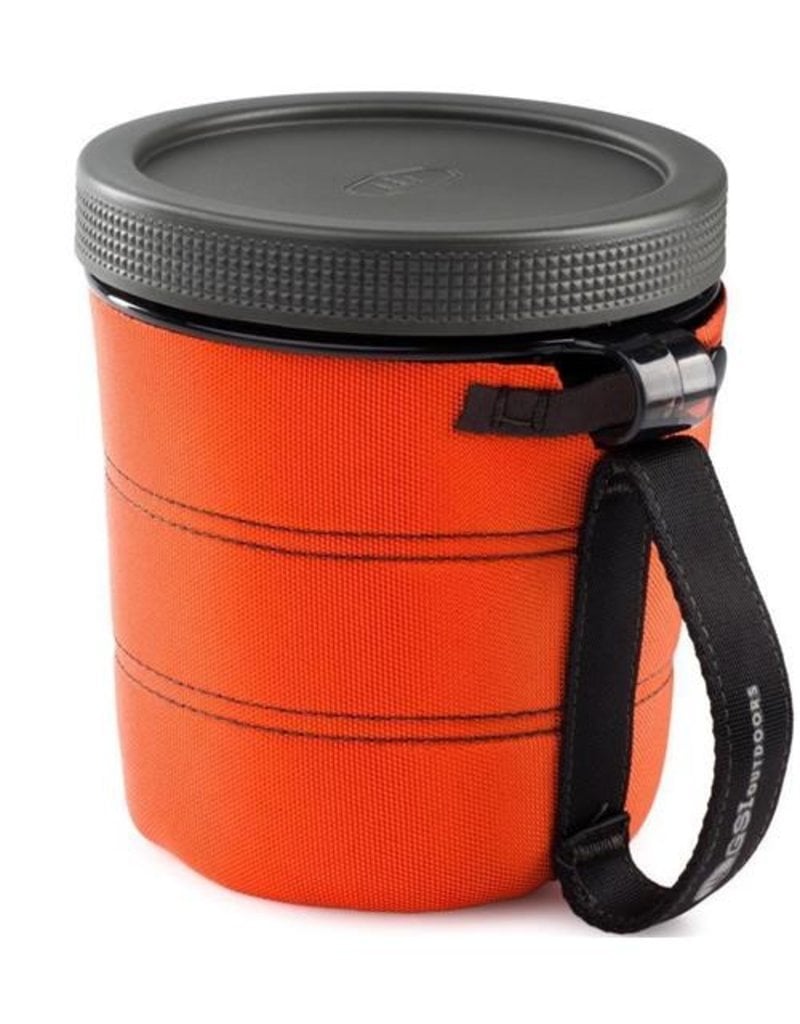 A lightweight tupperware container with insulation is recommended. Avoid small bowls that are prone to tipping and more fragile (plastic). Metal containers conduct heat more rapidly and lead to colder food and drinks faster than other materials.
A lightweight tupperware container with insulation is recommended. Avoid small bowls that are prone to tipping and more fragile (plastic). Metal containers conduct heat more rapidly and lead to colder food and drinks faster than other materials.
Examples
i
i
i
i
Personal Thermal Mug
 12-32oz with a lid.
12-32oz with a lid.
Examples
i
i
i
i
i
i
i
Water Bottles
Examples
 --> Naglene 32oz Wide Mouth Ultralite Bottle
--> Naglene 32oz Wide Mouth Ultralite Bottle
 --> AAI Nalgene Ultralight HDPE Wide Mouth Bottle
--> AAI Nalgene Ultralight HDPE Wide Mouth Bottle
i
Water Bottle Parkas
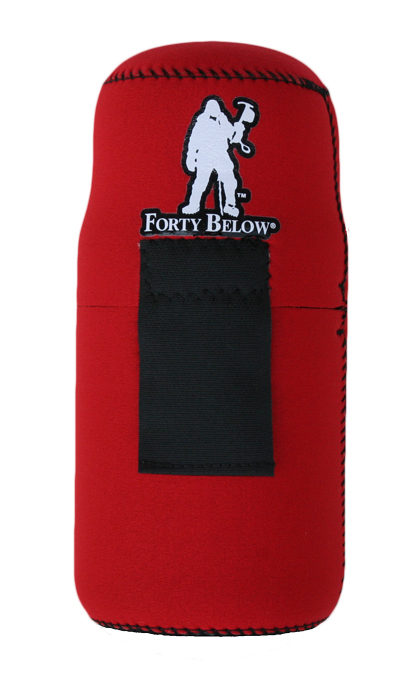 These insulating jackets are for your water bottles to help prevent freezing. It is really important that the water bottle parka cover the entire bottle, including the lid. If the parka does not cover the whole bottle, it will not work. Bring one for each bottle.
These insulating jackets are for your water bottles to help prevent freezing. It is really important that the water bottle parka cover the entire bottle, including the lid. If the parka does not cover the whole bottle, it will not work. Bring one for each bottle.
NOTE: Please write your initials on the outside of the parka, making it easy for your guides to fill up and return them to you.
Examples
i
i
i
i
i
i
i
Other Essentials
Toothbrush and Toothpaste

Travel size recommended.
i
i
i
i
i
i
i
i
i
i
i
Hand Sanitizer
 It is better to bring multiple smaller containers than one big one. That way you can stash them in multiple places and have redundancy if one get's lost or broken. Travel size recommended. Bring at least 2.
It is better to bring multiple smaller containers than one big one. That way you can stash them in multiple places and have redundancy if one get's lost or broken. Travel size recommended. Bring at least 2.
i
i
i
i
i
i
i
i
i
Face and Wet Wipes
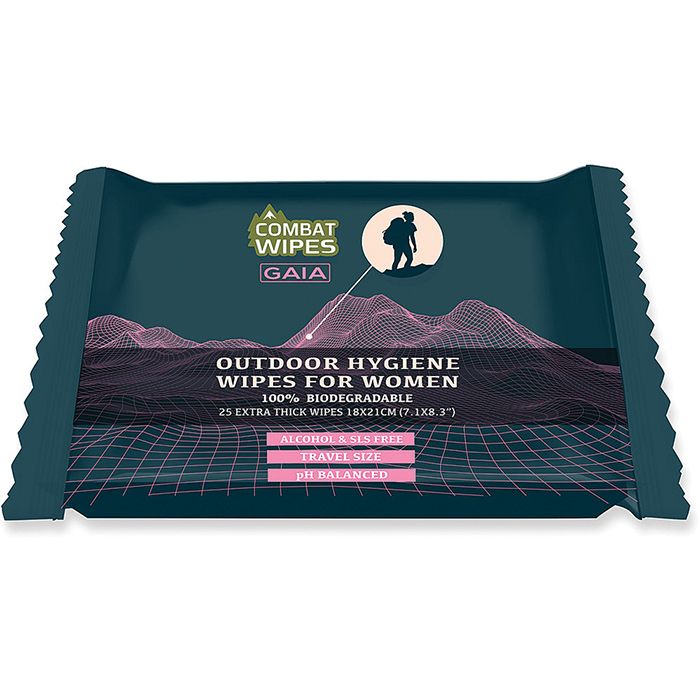 The mountain shower. For personal hygiene and general use. Allot for at least 1-2 a day while on the mountain. Using makeup remover pads have been found helpful for taking off sunscreen.
The mountain shower. For personal hygiene and general use. Allot for at least 1-2 a day while on the mountain. Using makeup remover pads have been found helpful for taking off sunscreen.
Examples
Female Specific
Pee Bottle
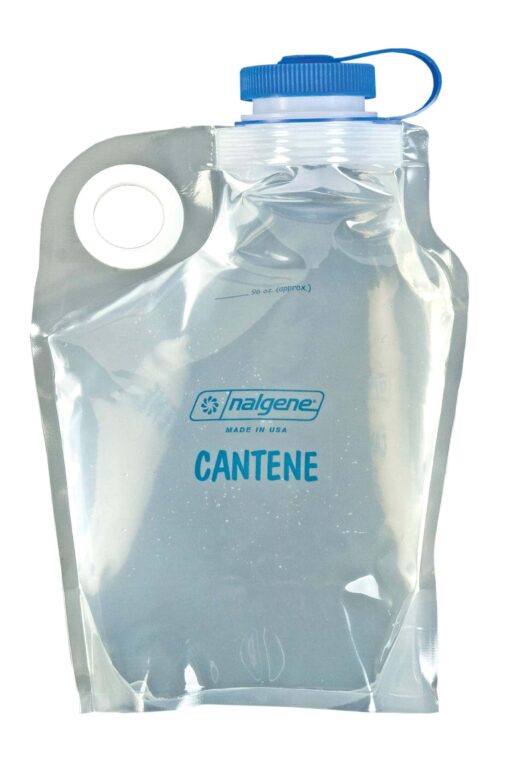 Used at night or when the weather is poor so you don’t have to get out of your tent. 1-quart size minimum. A collapsible 2L Nalgene recommended. Plastic bottles from the store such as Gatorade bottles can work well but the lids are less secure than a Nalgene. If you choose to bring one of these, use it carefully and make sure the capacity is adequate. Label your pee bottle well.
Used at night or when the weather is poor so you don’t have to get out of your tent. 1-quart size minimum. A collapsible 2L Nalgene recommended. Plastic bottles from the store such as Gatorade bottles can work well but the lids are less secure than a Nalgene. If you choose to bring one of these, use it carefully and make sure the capacity is adequate. Label your pee bottle well.Examples
Foot Powder/Antiperspirant
 A very small bottle will allow you to treat your feet daily, keep them drier, extend the life of your socks, and help you avoid blisters/rashes from chronic wet feet.
A very small bottle will allow you to treat your feet daily, keep them drier, extend the life of your socks, and help you avoid blisters/rashes from chronic wet feet.
Examples
 --> Gold Bond Medicated Powder 1oz. Travel Size
--> Gold Bond Medicated Powder 1oz. Travel Size
i
i
Female Specific Items
Female Urination Device

CLICK HERE for more info!
Examples
i
i
i
i
Menstruation Collection Cup

CLICK HERE for more info!
CLICK HERE for even MORE info!
Examples
-Diva Cup BUY NOW!
-Intima Lily Cup BUY NOW!
i
i
i
i
Sun Protectioni
Sunscreen

SPF 30+, zinc based is preferred. Small travel size tubes are recommended so you can put them in a pocket for easy access. Stick applicators allow you to apply without exposing fingers. Only your face and, at times, your hands will be exposed. Several small containers are better than one large one. Sunscreen is prone to freezing in the cold and smaller containers fit well into pockets for warming.
Example
 --> All Good Mineral Sport Sunscreen 3oz.
--> All Good Mineral Sport Sunscreen 3oz.
 --> Thinksport Safe Sunscreen SPF 50+
--> Thinksport Safe Sunscreen SPF 50+
 --> Z-Blok Sunscreen 2oz. Travel Size
--> Z-Blok Sunscreen 2oz. Travel Size
Sun stick
 --> All Good Mineral Sun Stick
--> All Good Mineral Sun Stick
 --> Thinksport Sunscreen Stick
--> Thinksport Sunscreen Stick
 --> Dermatone Mineral Sunscreen Stick
--> Dermatone Mineral Sunscreen Stick
i
Lip Balm
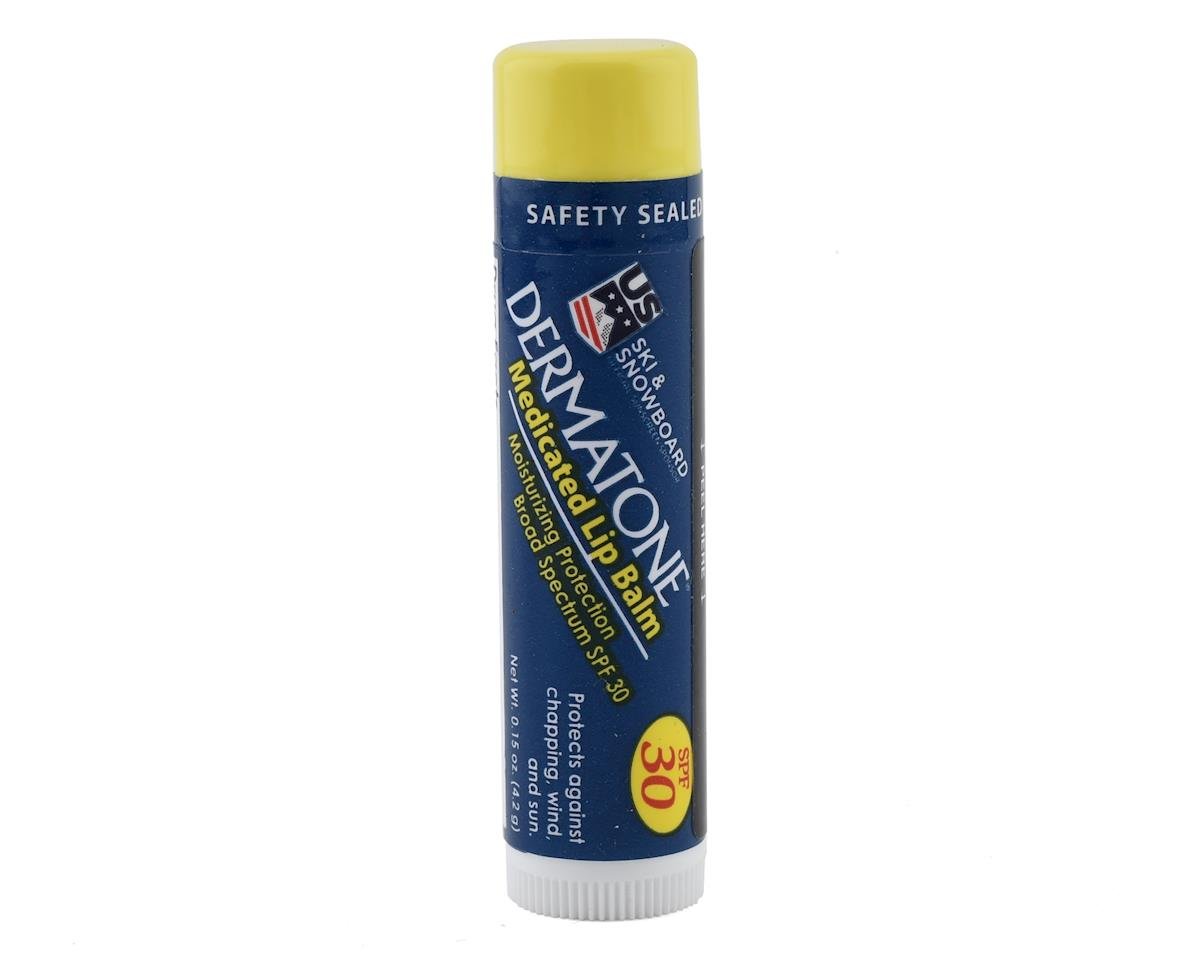
Bring 2 containers/applicators with the highest SPF available. Must be SPF rated.
Examples
 --> Dermatone Medicated Lip Balm SPF 30
--> Dermatone Medicated Lip Balm SPF 30
i
i
First Aid/Repair Kit
Personal First Aid Kit
AAI supplies expedition med kits with a supply of prescription drugs. If you have any special needs please communicate them to AAI and plan to bring an adequate supply of your medications based on counsel from medical professionals.
Cuts, Bruises & Blister kit
- 10 assorted Bandaids
- Plenty of Compeed, Bandaid, or Dr. Scholls blister pads
- A packet of moleskin (note: some people are allergic to the glue on moleskin and other medical adhesives.)
Personal Medications
- Tylenol, Ibuprofen, or Aspirin
- Immodium (Anti-Diarrhea)
- Antacids
- Pepto-Bismol (Stomach Relief)
- If you suffer from Asthma or significant allergic reactions, please notify AAI and your guide regarding the location and presence of your epi-pen and/or inhaler.
The following drugs require a physician's prescription. Be sure to discuss the use and precautions for each drug with your doctor.
- Acetazolomide (Diamox) - For prevention or treatment of Acute Mountain Sickness.
- Choose one broad-spectrum antibiotic that is known to be effective for lung microbes/respiratory tract infections.
o Trimethoprim-Sulfamethoxazole (Bactrim or Septra)
o Levaquin (levofloxacin)
o Gatifloxacin
NOTE: Always consult a doctor when selecting medications and antibiotics for personal use.
Repair Kit
 Your guides will have a full-featured repair kit. You will want a small personal repair kit as well with the following items:
Your guides will have a full-featured repair kit. You will want a small personal repair kit as well with the following items:
- Patch Kit for your inflatable sleeping pad.
- Valve Kit if applicable
- Tenacious Tape Repair Patches
- Duct Tape (can be wrapped on water bottles or trekking poles)
i
i
i
Multitool/Knife
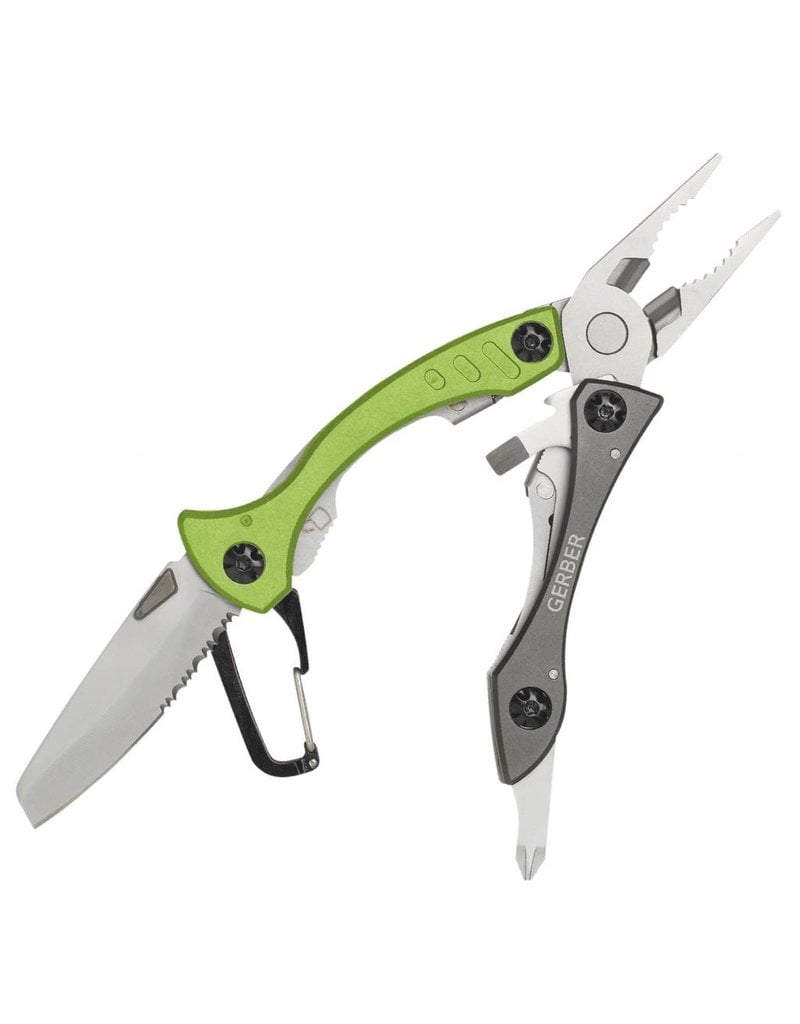 Any multi tool similar to a Leatherman is great. One can be shared amongst tent-mates. Smaller and simpler is better than overly complex.
Any multi tool similar to a Leatherman is great. One can be shared amongst tent-mates. Smaller and simpler is better than overly complex.
Examples
i
i
i
Optional Items
The items below are not required, although many are nice “luxury” items that can make your expedition more enjoyable. Remember that a few ounces here and there add up to extra pounds on your back and knees during your expedition.
i
Garbage Bags
Bring two or three large ones. They serve a variety of uses. Trash compactor bag, if available, are more durable.
i
Entertainment
Books, games, cards, tablet, etc. for stormy days in the tent. AAI provides a solar panel than can be used to charge electronic devices. However, expedition electronics will have first priority.
i
Journal and Writing Device
Some climbers like to keep a journal or log for writing on the trip. Ballpoint pens and pencils work well in the cold and at altitude but other ink type pens do not. “Rite-in-the-Rain” notebooks are more durable and more functional for the mountain environment than regular notebook paper.
i
Portable Charging Device
Phone charger, battery pack, or small solar panel. Highly recommended here if you anticipate using a lot of electronics during the duration of the expedition. Yes the Guides will have a solar panel and battery banks that clients can use as well, but expedition safety equipment is going to take precedent here. That and with many other clients on the expedition, time to be able to charge your personal device will be limited. Where if you bring your own you can charge whenever you want. If you do end up bringing something like this, please make sure you are familiar with everything and how it all works, this is not something you want to be figuring out on the mountain.
NOTE: Solar panels should only be used to charge battery packs. Battery packs should be used to charge devices. Inappropriate use of a solar panel could lead to the depletion of a device’s power.
i
Ear Plugs
For defense against snoring and high winds. Bring at least 2 sets of these for redundancy in case something happens to the first set. Sleep is a huge part of morale and expedition success. Any advantage you can get towards better sleep is worth it.
Sleeping Mask
It is going to be light out for the majority of your expedition, even when it is 'supposed to be' dark out. The nature of being so far north and the tilt of the earth. This piece can be extremely valuable to have. Yes you can use other items potentially to cover the eyes when you try to go to sleep, question is are they going to be as effective. Again, any advantage you can get towards sleeping well is going to be very well worth it.
i
Insect Repellant
Recommended for use in Talkneetna and Anchorage. If bringing repellent look for more concentrated repellent in smaller containers. Pack it in a Ziploc bag to prevent contaminating other items in your pack.
i
Camera
Phone cameras are preferred. SLR cameras are not recommended due to their size and bulk. Small point and shoot cameras that can easily be carried in an outside pocket or small case outside your pack. If you can’t comfortably and safely carry your camera outside your pack, even in bad weather, you’ll miss the best photo opportunities. It will also be important to keep your camera warm, so having a means to carry it close to your body.
i
Headlamp? Not Needed….
By mid-May there is very little darkness in the Alaska Range and headlamps are not needed. Climbers on early May trips may choose to bring a small headlamp for the few hours in the late night or early morning that it is close to dark, but most people will not need one. If you do bring one it should be very small and very light like the Petzl Tikka or Black Diamond Ion.
** If you are taking a Denali Prep course in Washington, then a headlamp is needed. 300-450 lumens recommended.
i
Post-Climbing Clothing
Plan ahead and pack some clean clothes (and flip flops!) in your duffel at the airstrip to change into when you get off the glacier.




